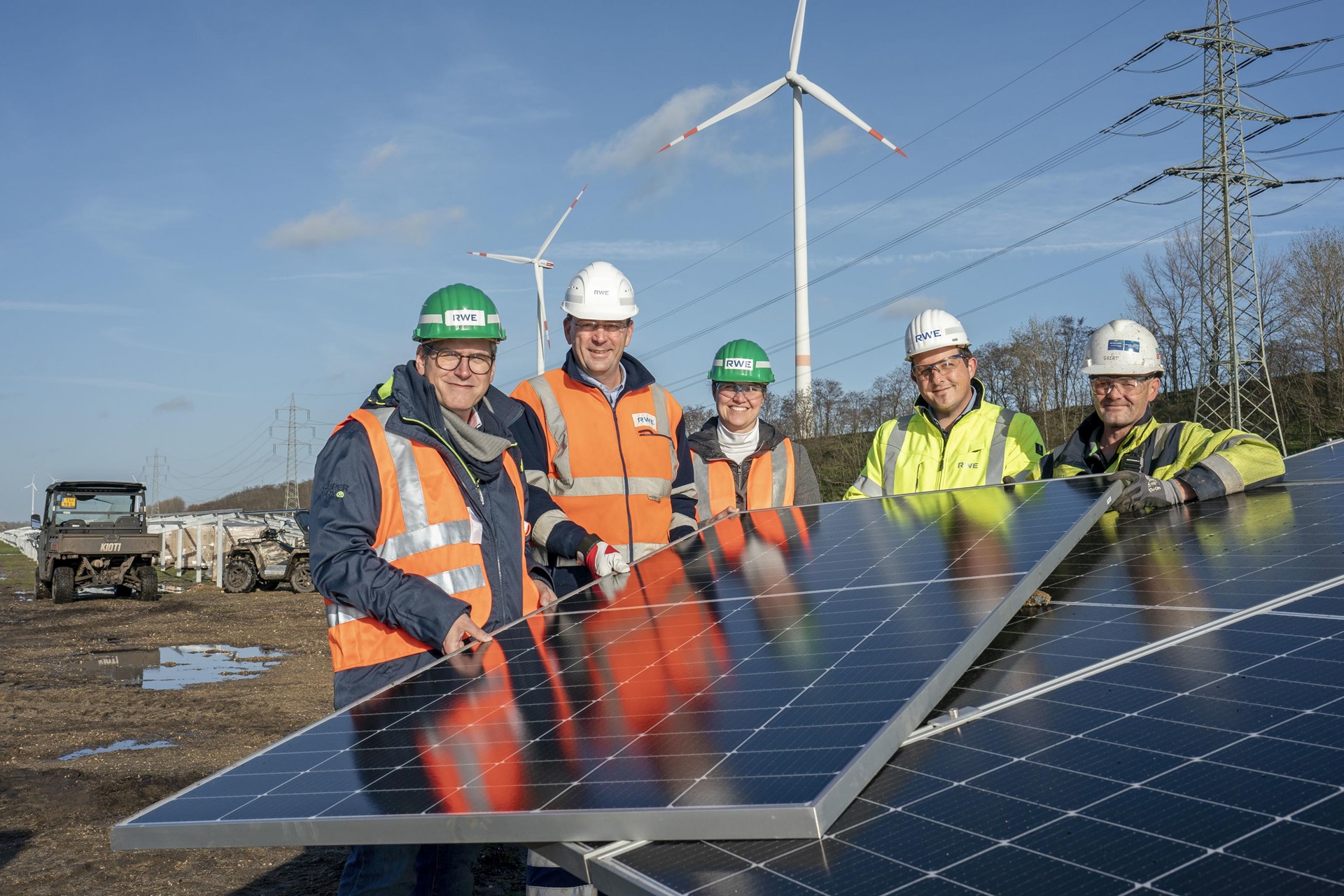RWE and ARC marine celebrate milestone success in promoting marine biodiversity with eco-engineered scour protection at Rampion Offshore Wind Farm
08.07.2025

Can solar energy be used even when the sun does not shine? Yes, thanks to photovoltaic systems with attached battery storage facilities. RWE is currently constructing two plants of this type in Germany. At Garzweiler Mine near the city of Bedburg in North Rhine-Westphalia, a total of over 58,340 modules will collect sunlight to produce green electricity for more than 7,250 homes. Garzweiler Mine produces lignite for power generation in nearby power stations.
Sascha Solbach, Mayor of the city of Bedburg: “In order to secure a clean and reliable supply with electricity we not only need more energy from renewable sources, but also storage solutions like those being implemented by RWE at Garzweiler Mine. In this way, consumers can use solar power even after sunset.”
A photovoltaic plant with a peak generation capacity of 19.4 megawatts peak (MWp) and a storage capacity of 6.5 MW is being installed directly below Königshovener Höhe wind farm, which is jointly operated by the city of Bedburg and RWE. Work at this site has already started. Parts of the substructure are in place and the first solar modules have been erected. The Jackerath project with a photovoltaic capacity of 12.1 MWp and 4.1 MW of battery storage is being built at the western edge of the opencast mine. The batteries are designed for a two-hour charging and supply cycle.
“Both sites together are roughly the size of 38 soccer fields”, explains Markus Kosma, Head of Production at RWE Power’s mines. “This shows that we are recultivating land at an enormous scale, with plenty of space for renewables available also in areas where we are still mining. In this way, we are ensuring that the mining district will remain an energy location going forward.”
RWE project manager Christian Meisen adds: “We want our two combined photovoltaic and storage systems to be commissioned early in 2023. To maximise generation of green energy, we are using bifacial modules, which are photosensitive on both sides.” The advantage: in addition to sunlight hitting the panels directly, they also utilise the light reflected by the ground to the rear side of the modules. “This makes these panels extremely efficient”, says Meisen. “And with the batteries, feed-in can be optimally tailored to meet demand. We are implementing this integrated plant concept at several locations at the same time.”
A similar plant at the nearby Inden Mine is to be commissioned shortly. There, RWE has combined more than 26,500 solar modules with a battery storage system. The plant can supply some 4,000 homes with green electricity. Another combined photovoltaics and storage plant is to be constructed at Hambach Mine. The latter also is located in the Rhenish lignite mining district. RWE wants to build renewables plants with a minimum of 500 megawatts of capacity in the Rhenish lignite mining district alone by 2030.
Pictures for media use are available at the RWE Media Centre